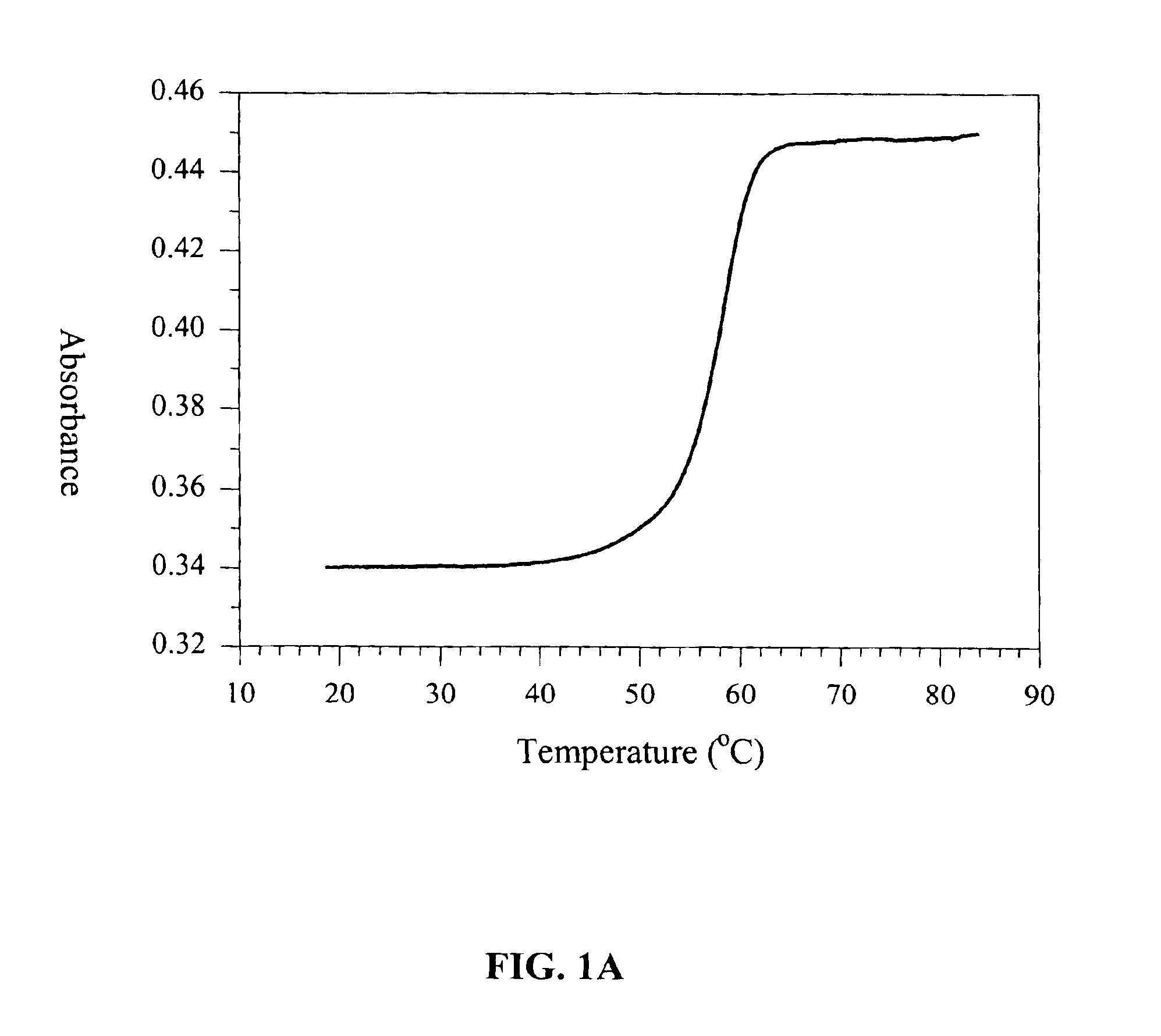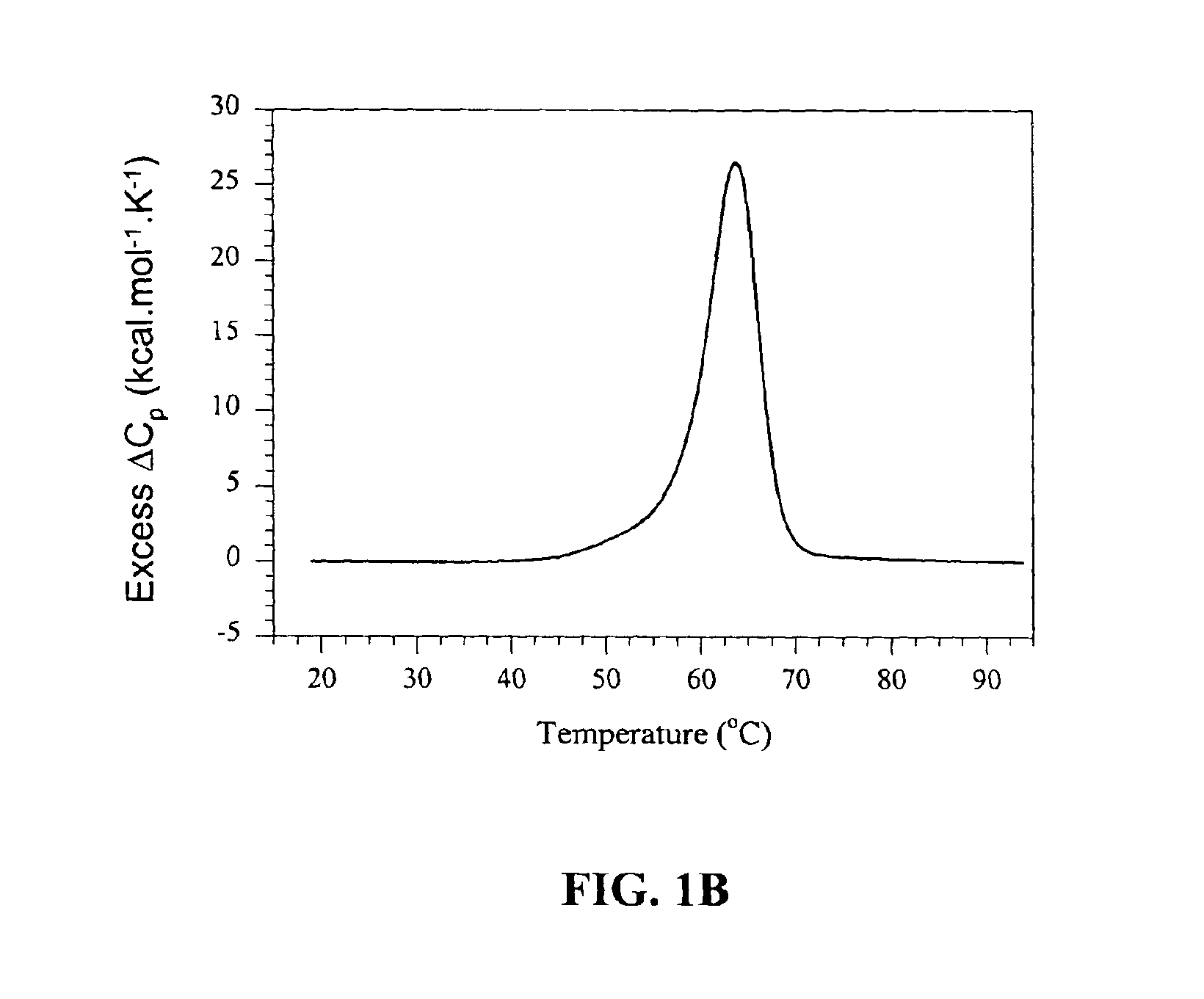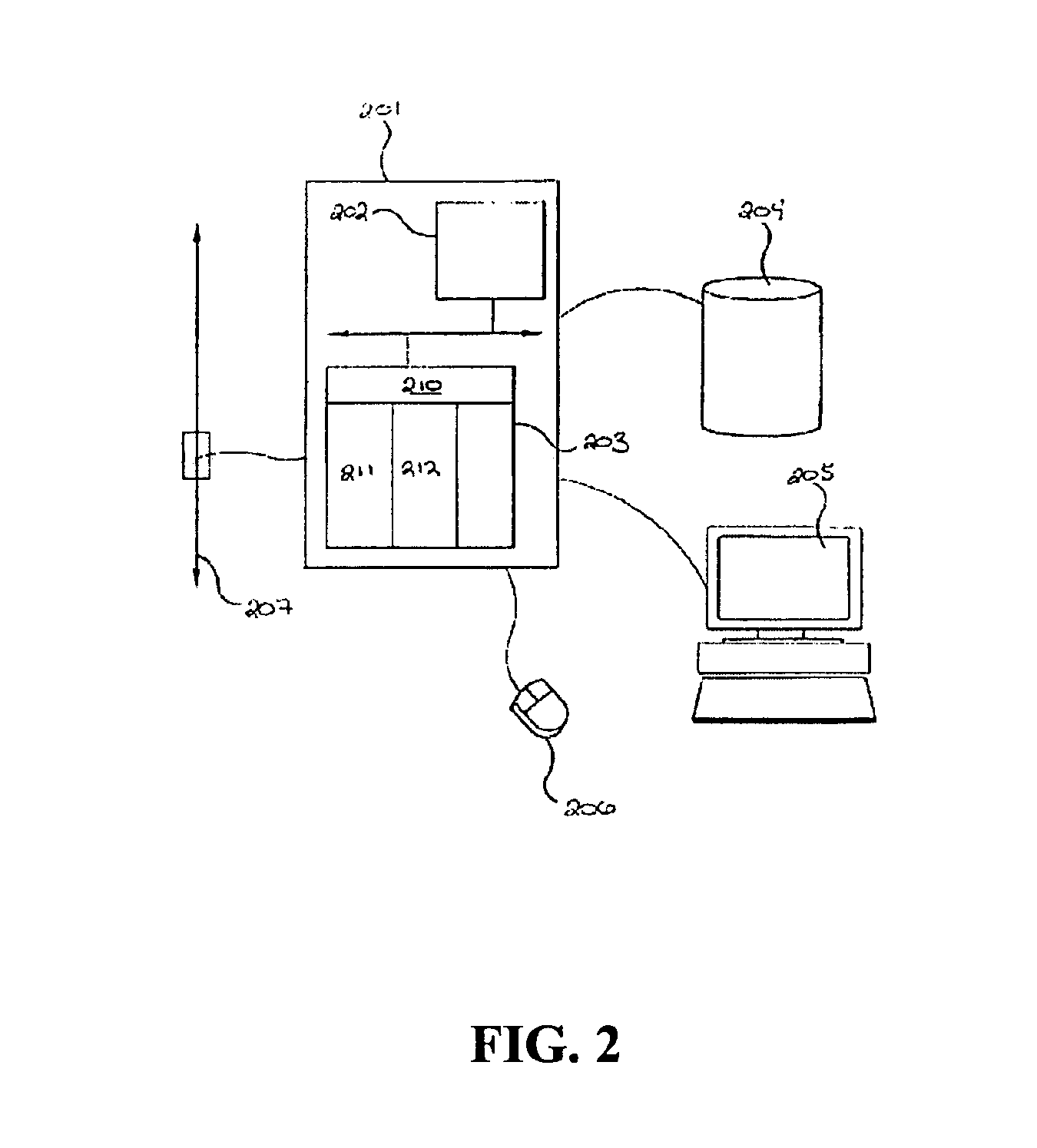Methods and systems for estimating the melting temperature (TM) for polynucleotide molecules
a polynucleotide and melting temperature technology, applied in the field of nucleic acid molecules design, analysis and/or evaluation, can solve the problems of inability to accurately predict the melting temperature of probes or primers, inability to achieve good results, and inability to accurately estimate the melting temperature of salt conditions in such assays, so as to achieve reliable melting temperatures and computational tractability
- Summary
- Abstract
- Description
- Claims
- Application Information
AI Technical Summary
Benefits of technology
Problems solved by technology
Method used
Image
Examples
example 1
Melting Temperatures of Various Oligomers Measured in Different Salt Conditions:
[0074]This example describes experiments in which melting profiles were measured for at least 92 different, exemplary oligonucleotide molecules in various salt concentrations. Melting temperatures are extracted from those profiles for each oligonucleotide at each salt concentration observed, and those melting temperatures are provided in the results, infra. Sequence information for each of the exemplary oligonucleotides is also provided.
[0075]Materials and Methods
[0076]Oligonucleotide synthesis and purification. DNA oligonucleotides (SEQ ID NOS:1-92) were synthesized using solid phase phosphoramidite chemistry, deprotected and desalted on NAP-5 columns (Amersham Pharmacia Biotech, Piscataway, N.J.) according to routine techniques (Caruthers et al., Methods Enzymol. 1992, 211:3-20). The oligomers were purified using 20% polyacrylamide gel electrophoresis in 1×TBE buffer (50 mM Tris, 50 mM boric acid, 1 mM...
example 2
Sequence Dependent Salt Effects on Tm
[0096]As an initial evaluation of the effect(s) sequence composition and length may have on a nucleic acid's melting temperature Tm, the experimentally determined melting temperatures for each oligonucleotide in Table I, supra, were fit in a least squares analysis to each of the following linear regressions:
Tm=Tm0+mlog[Na+] (Equation 6.1)
1Tm=1Tm0+m log[Na+](Equation 6.2)
[0097]Equations that are similar in form to Equations 6.1 and 6.2 are well known in the art and have been used to predict nucleic acid melting temperatures for specified salt concentrations. However, the versions of these formulas that have been previously described use coefficients (i.e., for m) that are constants and are independent of (and therefore unaffected by) either the nucleic acid's length or base composition. For example, Schildraut et al. (Biopolymers 1965, 3:195-208) describe an equation that is similar to Equation 6.1, above, for estimating a nucleic acid's me...
example 3
Formulas for Improved Prediction of Tm for Different Salt Conditions
[0105]To evaluate the effect(s) that differing salt concentrations may have on an oligonucleotide's melting temperature, the experimentally determined melting temperatures set forth in Table I, supra, were fit to various different equations that predict melting temperature based on: (1) salt concentration (in this example, [Na+]), and (2) oligonucleotide sequence content (e.g., ƒ(G-C)). Generally speaking, the equations were of one of the following forms: Tm=Tm0+k(f(G-C))×ln[Na+][Na+]0+b×(ln2[Na+](1)-ln2[Na+](0))(Equation 6.7)1Tm=1Tm0+k(f(G-C))×ln[Na+][Na+]0+b×(ln2[Na+]-ln2[Na+](0))(Equation 6.8)
[0106]In Equations 6.7 and 6.8, above, Tm denotes a melting temperature to be determined for a nucleic acid in a particular concentration of monovalent cations, [Na+]. Tm0 denotes the nucleic acid's melting temperature in some “reference” concentration of the monovalent cations [Na+](0). Typically, a value of 1...
PUM
| Property | Measurement | Unit |
|---|---|---|
| Length | aaaaa | aaaaa |
| Molar density | aaaaa | aaaaa |
| Molar density | aaaaa | aaaaa |
Abstract
Description
Claims
Application Information
 Login to View More
Login to View More - R&D
- Intellectual Property
- Life Sciences
- Materials
- Tech Scout
- Unparalleled Data Quality
- Higher Quality Content
- 60% Fewer Hallucinations
Browse by: Latest US Patents, China's latest patents, Technical Efficacy Thesaurus, Application Domain, Technology Topic, Popular Technical Reports.
© 2025 PatSnap. All rights reserved.Legal|Privacy policy|Modern Slavery Act Transparency Statement|Sitemap|About US| Contact US: help@patsnap.com



